Excellent Result with 3 Hair Transplant Surgeries
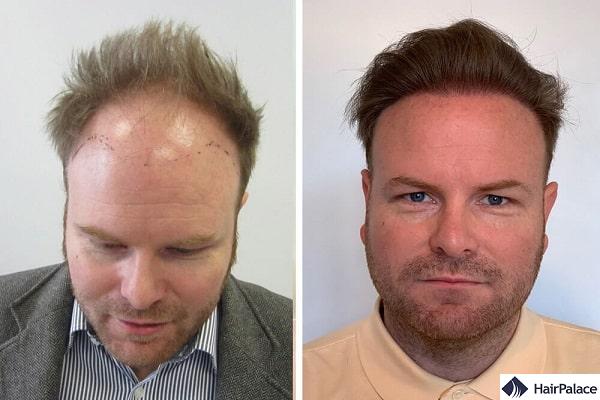
As hair transplant surgery offers a permanent result, it makes it possible to rebuild the density of the hair in a day.
But we see many cases when one session is simply not enough to achieve or maintain the best result.
It can happen that fully restoring the thinned out area requires more hair than we could safely extract in one procedure.
Or, the natural hair loss can progress leaving the patient with a different problem area behind the newly implanted part.
In both of these cases, a second hair transplant – or more – is necessary over the years to achieve optimal results.
In this post, we would like to introduce David and guide you through his case study.
He had three surgeries carried out at HairPalace clinic over the years to achieve the look on the picture above.
David’s 1st hair transplant
David first contacted us in February 2015 and attended our consultation on the 17th of February.
He explained why he decided to opt for hair transplantation as follows:
“I had been losing my hair since my early twenties and had been bothering me for some time. As the cost of surgery was (and still is) prohibitive in the UK, I thought the only option was to shave my head and live with it. However, I was excited to discover the cost of surgery in Hungary at Hair Palace was a fraction of that on the UK.”
After receiving the treatment plan detailing the doctors’ recommendation and the price, he reserved his surgery for April in a couple of days.
David’s goal was to restore his original hairline and to increase the density in the middle and crown areas as well.
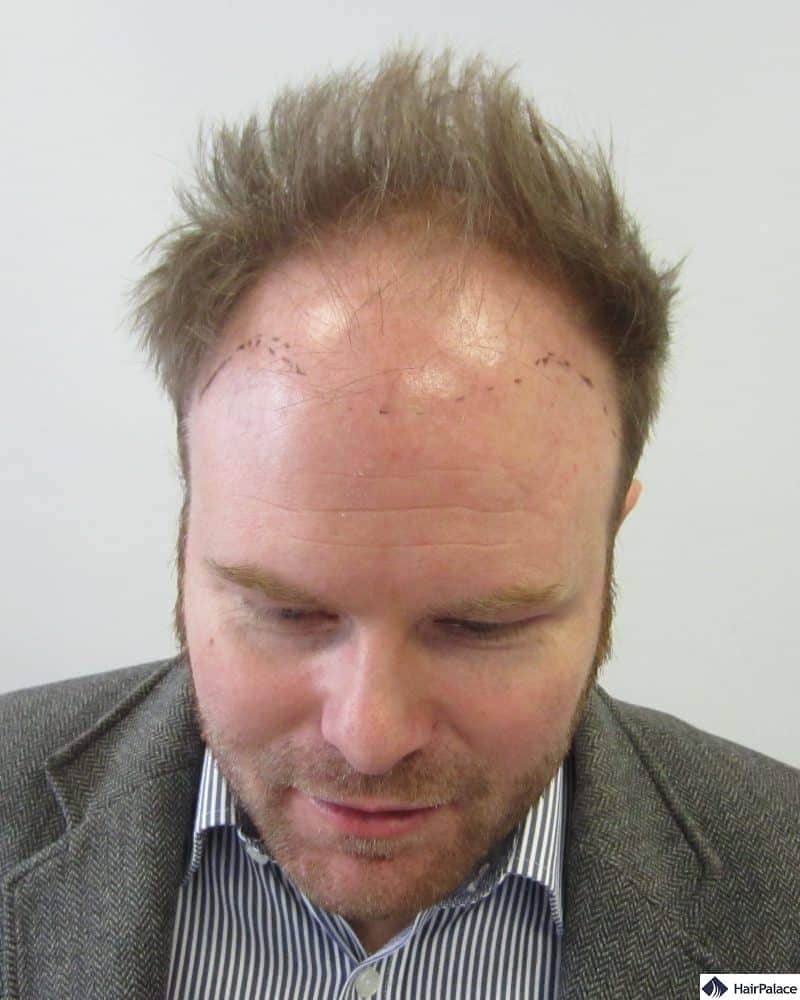
On the 13-14th of April 2015, we have implanted 6000 hairs with the state-of-the-art FUE 2 SafeSystem method.
The surgeon built out David’s hairline and the frontal zone, and implanted a smaller number of hairs to the mid part of his scalp and the crown area as well:
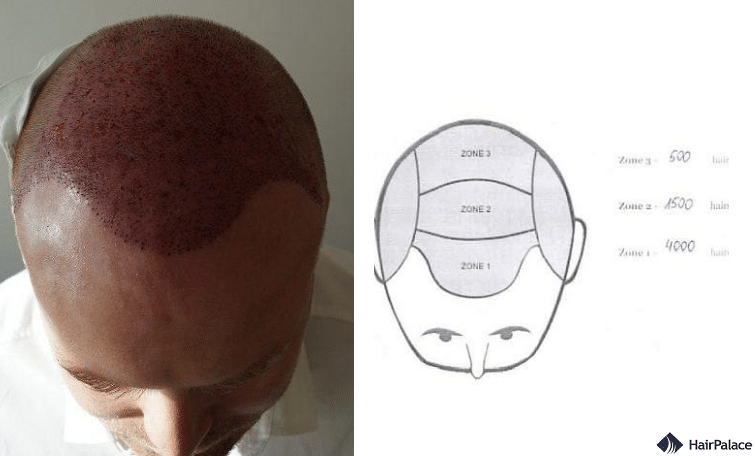
As the 6000 hairs were distributed over a relatively large area, the first procedure resulted in an even density all over the top:
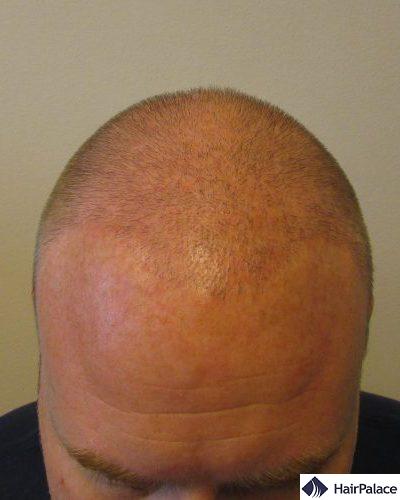
David’s 2nd hair transplant
Since the first session proved to be a good base, David decided for a second FUE2 procedure.
The surgery was carried out on the 10-11th of October 2016, when 5036 hairs were transplanted.
This time the goal was to increase the density within the hairline. Thus, the surgeon distributed the hairs over the three zones again, focusing on the frontal and crown areas:
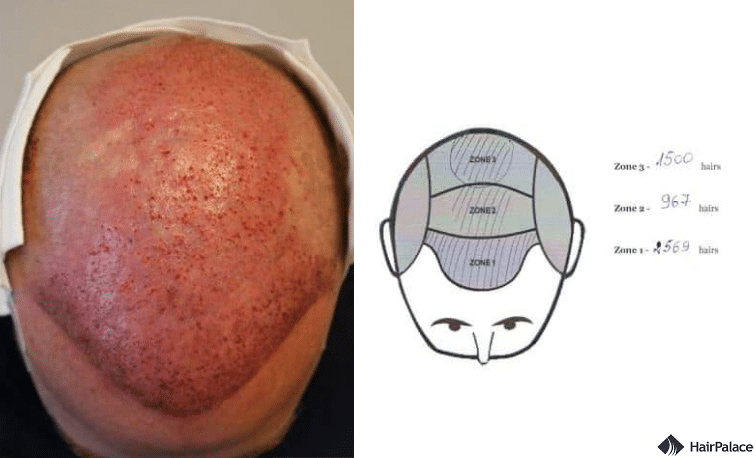
12 months later we saw the final result of his second procedure.
Throughout the months the density significantly improved, but full coverage was not achieved at the crown:
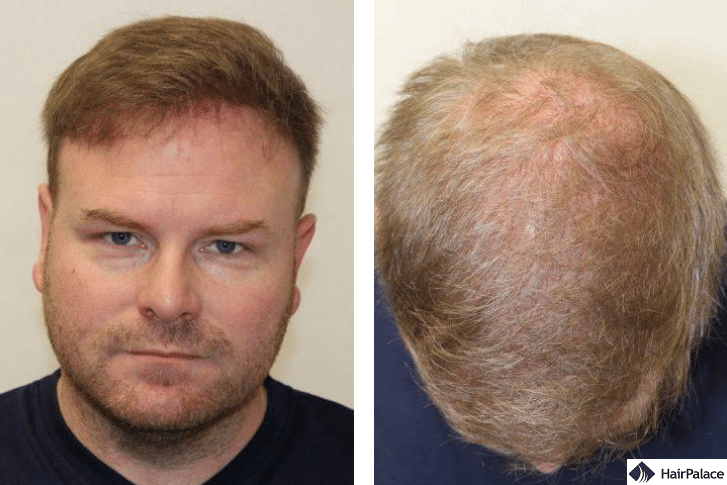
David’s 3rd hair transplant
As David would have preferred an even bigger density, he decided to go for a 3rd procedure on the 14-15th of November 2017.
His donor area allowed the extraction of 4204 hairs this time. The doctor distributed the hairs between the crown and the front-mid section:
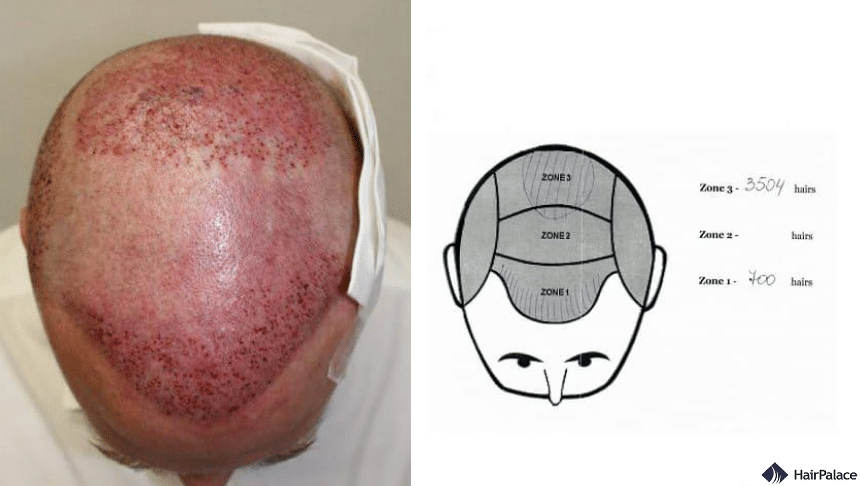
12 months later we were happy to see David with a full head of hair.
In total he had 15 240 hairs transplanted over the years:
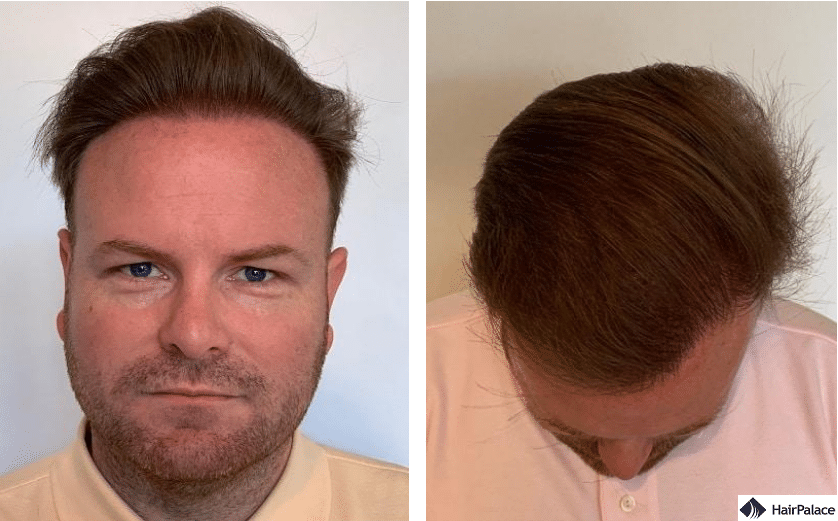
“I have now had a total of 3 visits to Hair Palace who have been absolutely fantastic and both the staff and facility are second to none. I am so happy with my results and could never have expected them to be this great. It has given loads more confidence. To anyone that is considering a hair transplant at Hair Palace, I would say ‘go for it!’, as I would do it again in a heartbeat.”
Donor area
The donor area is considered to be a “treasure”.
It is because in each case it allows the extraction of a limited number of hairs over the lifetime.
As the extracted hairs do not grow back on the donor area, each extraction will lower its density.
One of the advantages of the FUE2 procedure is that it does not leave visible scars on the donor area.
In addition, the doctors harvest the hairs evenly, from the whole expanse of the donor area. This way the surgery will not leave any thinner patches at the back and on the sides.
Let’s see the donor area in David’s case:
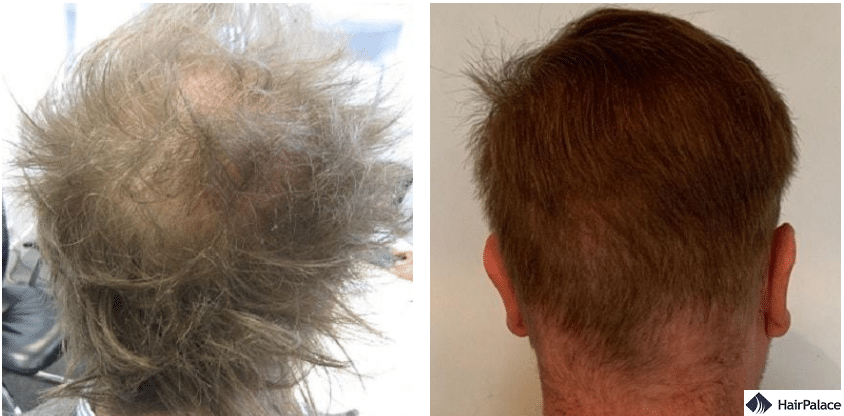
Summary
If the hair loss continues after the hair transplant, or the severity of the hair loss necessitates, a second hair transplant procedure might be needed.
However, each case is unique and the options for repeated procedures are always determined by the donor area.
As the FUE2 SafeSystem offers a 90-95% success rate, it allows achieving a natural-looking, dense result, while preserving the donor area for future procedures.


